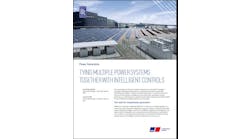by Skip Laitner
Guest Blogger, Energy Efficiency Markets
Reposted from Real Climate Economics
August 17, 2011
John ‘Skip” Laitner is an economist, enjoying a desert year while on research sabbatical from the American Council for an Energy-Efficient Economy. Skip is discovering some surprising insights from his time in the desert that can inform the way one looks at the economy and social systems. In a series of posts entitled Desert Year, Skip lends us his new insights, as well as his 40 years of experience as an energy and natural resource economist, to probe the economic, climate, and energy challenges that confront us.
A Robust Economy
There is a good deal of worry about the robustness of our nation’s economy. And rightly so. Especially since we have about 5 million fewer jobs today than in 2007, even as we have about 10 million more people to support with those available jobs.
In an effort to understand why economic performance has been so lackluster, we are constantly taking our economic temperature. We measure it every way we can. But it is also true that – other than the occasional surprise – what you measure is what you find; and we may not be measuring all of the right things.
The current measure of our economic well‑being is the ebb and flow of dollars transacted in the marketplace. These dollars are usually indexed against things like investment, labor output or population. From these various indices we suppose that we can obtain a reading on how well the economy is doing.
Examining the economy from a resource rather than a market perspective, however, may yield an entirely different understanding of the economic process. To better illustrate this point let us borrow some momentary insights from Arizona’s Sonoran desert environment.
In the desert, similarities in plant appearance are poor indicators of whether or not plants are related to one another. While the agave plants have vegetative structures similar to those of the aloe family, neither plant lineage can be determined until we examine their flowers.
The vegetative parts of both the agave and the aloe plants are mostly products of the very few adaptive mechanisms available to help a plant survive in the desert.
These survival mechanisms include extensive root systems and the ability to store water in the leaves and stem of a plant. With so few adaptive features available to them, even plants from unrelated families may look very much alike.
Flowers, in contrast to the plant structures, are the result of intricate relationships with the animals that pollinate them. Because of this dynamic two‑way interaction with animals and insects, flowers are more complex than the leaves or stems of a plant.
The relationship between the agave and the aloe plants is revealed, not by looking at their vegetative structures, but by comparing their flowers and fruits. It turns out that despite initial appearances, the Sonoran Agave and the South African Aloe have entirely different histories and origins.
In a similar way, we may develop a different understanding of why the nation’s lagging job creation is so lackluster if we measure it in a wholly different manner. And here we might build on the work of my colleagues Bob Ayres and Benjamin Warr in their book, The Economic Growth Engine: How Energy and Work Drive Material Prosperity. Measurements might include, for example, not just how much energy we are actually throwing at our various economic processes. More critically, we might ask how efficiently we actually might be in converting that energy into useful goods and services. This might reveal different insights than if we only ask how many dollars are consumed in the production process.
As the data from Ayres and Warr might suggest, when viewed from an energy rather than a market perspective, the American economy is perhaps 13 percent energy (in)efficient.
It takes energy to explore, mine and produce or transform coal, the oil and the natural gas needed to power our homes schools and businesses. And it takes energy to clean up the many wastes produced by that production and consumption of energy. Based on 2005 data we waste, in short, about 87 percent of all the energy consumed in our various economic activities.
As we might imagine, that level of huge waste creates an array of costs that might otherwise constrain a more robust economy. That level of waste adds a very large burden to our air, land and water resources. But we would not find this out by looking only at the dollar transactions of the marketplace. As with the Sonoran Agave and the South African Aloe, we need to look at more than the familiar indicators to understand the full historical relationships that determine the robustness of our nation’s economy.
John A. “Skip” Laitner is Director of Economic and Social Analysis for the American Council for an Energy-Efficient Economy (ACEEE), based in Washington, DC. Tucson is his family’s hometown, and he likely will be there through August of 2012. He hopes to provide a new posting roughly every week over this next year. While these columns do not reflect the official opinion or views of ACEEE, its board or its staff, he can be reached at [email protected].






